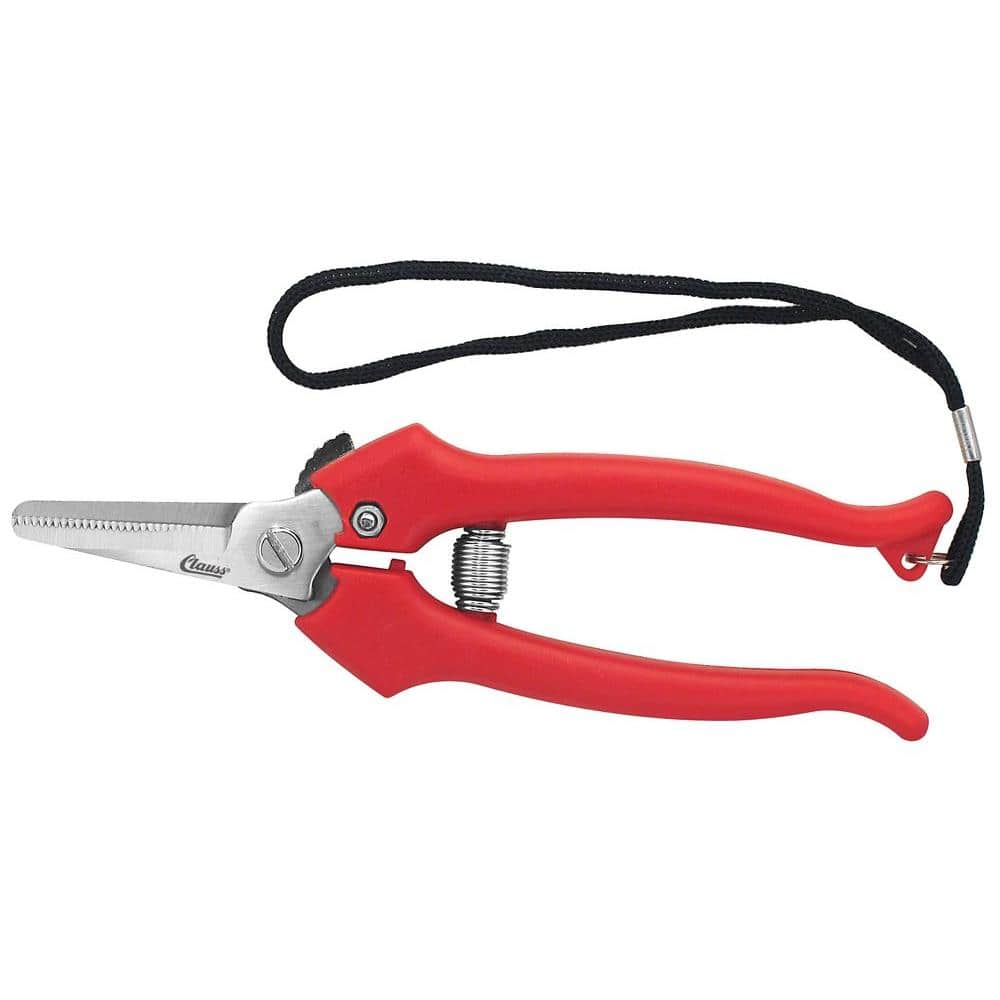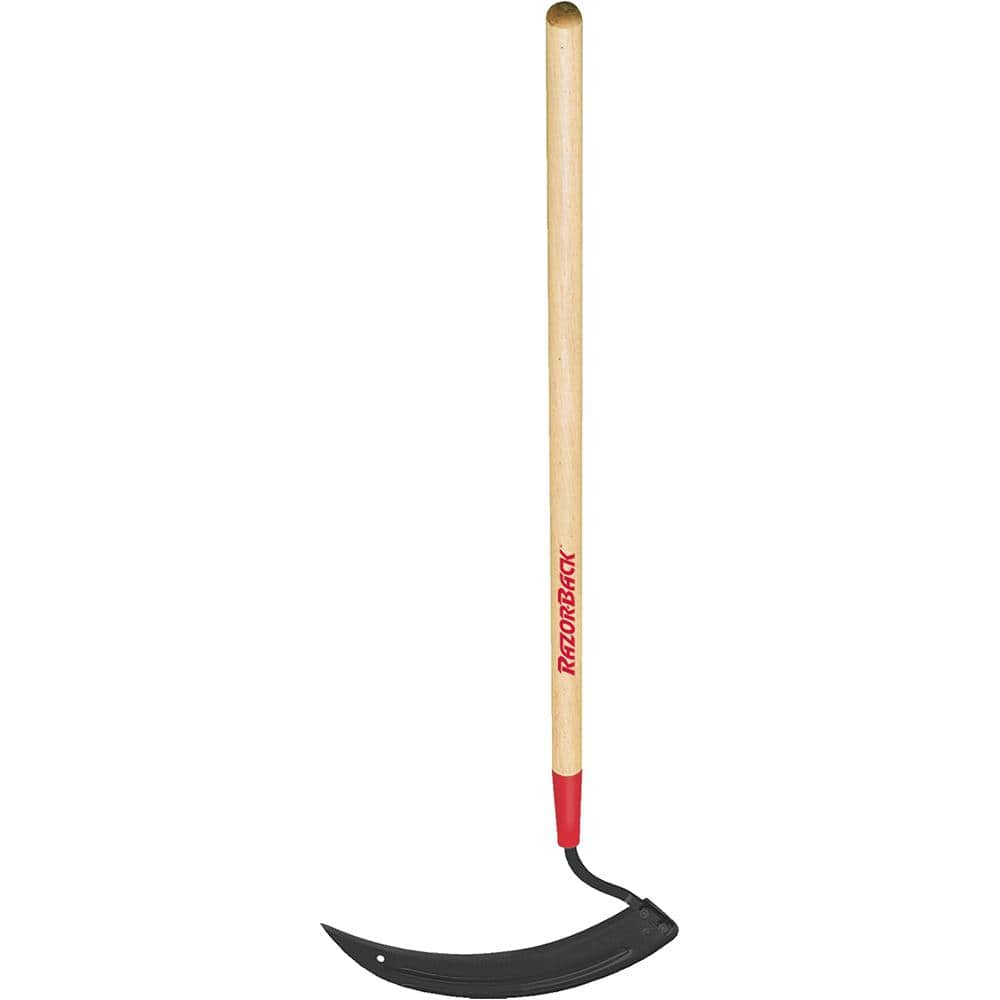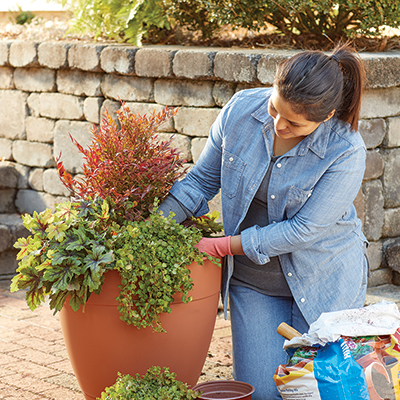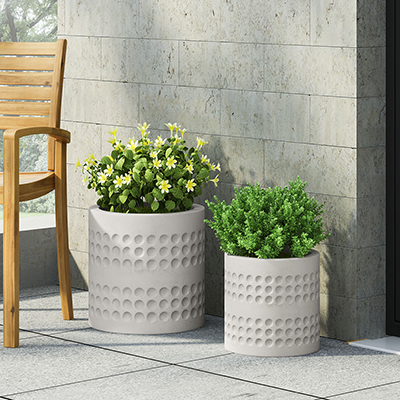How to Grow Geraniums
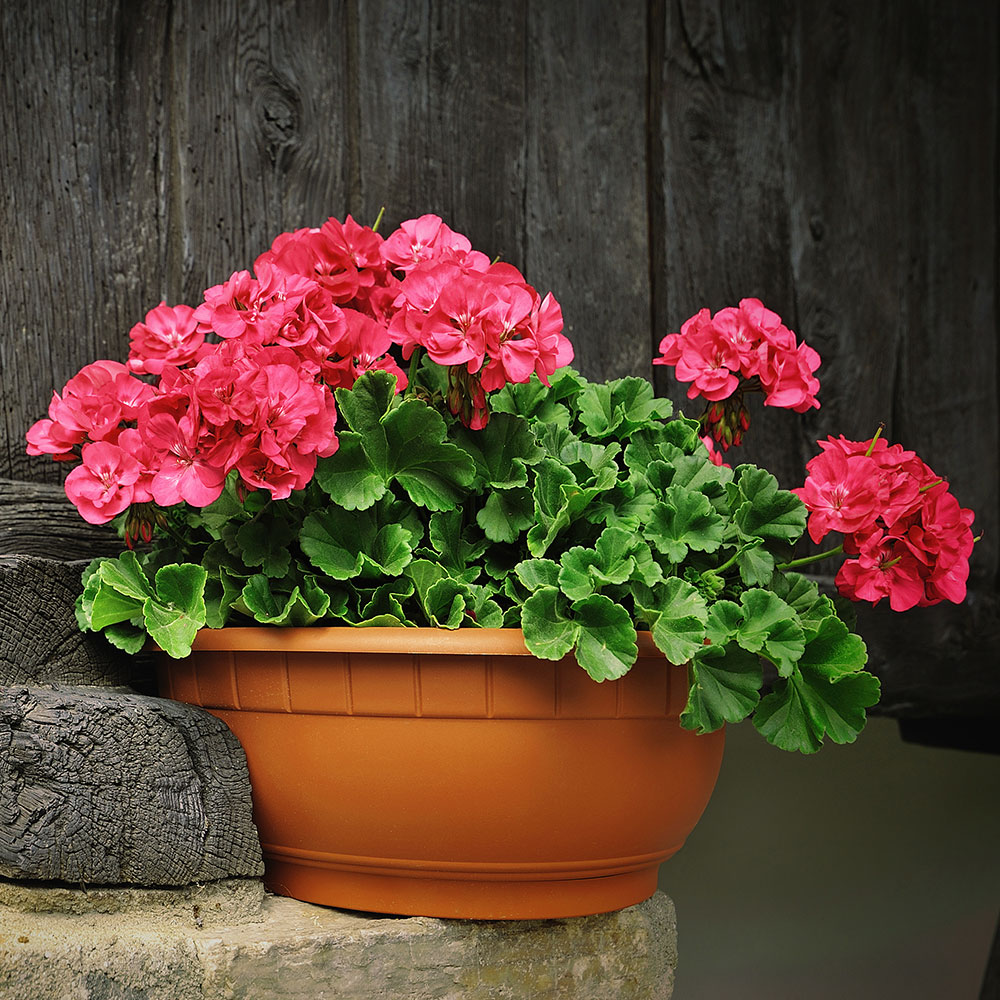
Last updated September 7, 2023
Geraniums P)(Pelargoniums) are some of the most colorful, easygoing flowers to plant. Plant in April or May depending on your climate, and you can expect clusters of colorful flowers well into the fall. This guide highlights what you need to know to grow geraniums.
Table of Contents
What to Know to Grow Geraniums
Types of Geraniums
How to Plant Geraniums
Maintaining Geraniums
Avoiding Pests on Geraniums
Overwintering Geraniums
What to Know to Grow Geraniums
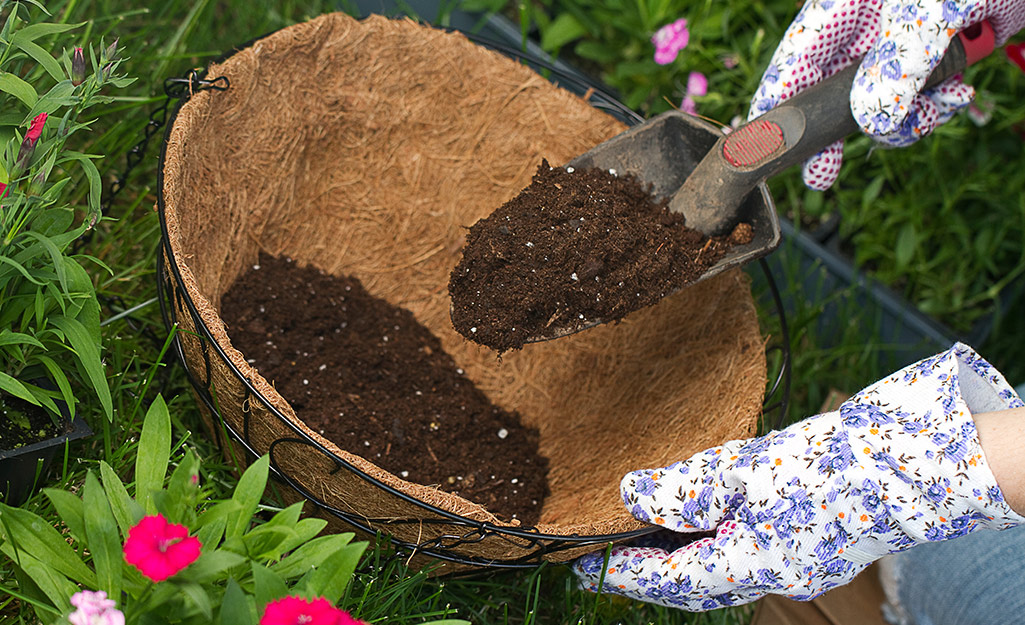
Geraniums aren’t fussy, but you will need to provide them with optimal growing conditions for the plants to thrive. Plant in well-drained soil in full sun, or with slight shade if you live in a warmer climate. If you plant them in a container, water frequently, especially during the summer months. Geraniums can be planted in most types of soil but prefer a neutral or alkaline soil.
Types of Geraniums
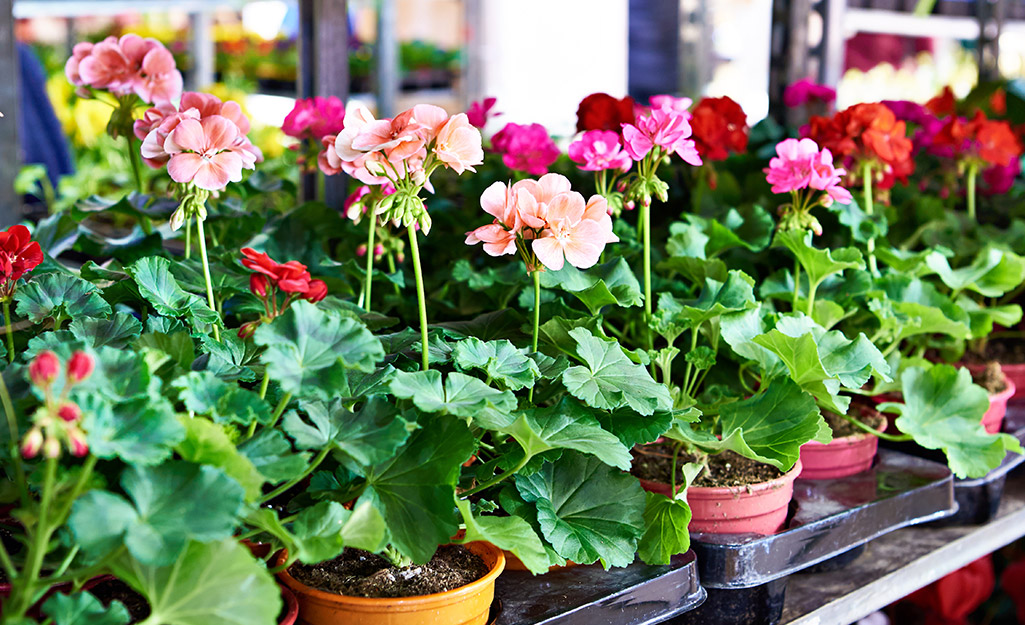
There are several different varieties of geraniums to enjoy, including some that ward off mosquitoes.
Scented-leaf geraniums. The mosquito geranium is among the most common of scented-leaf geraniums. Known also as the citronella plant, it deters mosquitoes. Other scented geraniums include those that smell like ginger, rose, cinnamon and pineapple.
Ivy-leaf geraniums. Just like ivy, these geraniums take on a trailing effect. They work best in hanging baskets and prefer more moderate temperatures instead of hot sun.
Perennial geraniums. Known as “cranesbill geraniums,” these plants are extremely hardy and come back year after year. They are available in several varieties, including the “Rozanne” geraniums, which feature blue, heat-tolerant flowers.
Indoor geraniums. Varieties such as “Martha Washington” and “Regal” geraniums are available during winter and perform best indoors.
How to Plant Geraniums
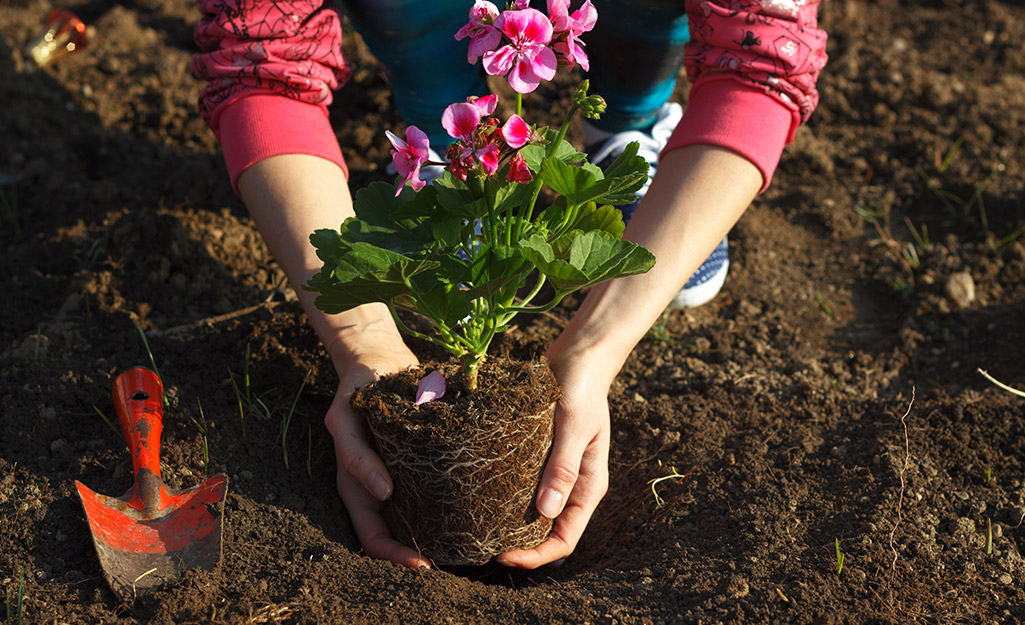
The best time to plant geraniums is when the nights are still cool enough to encourage budding. When planting geraniums in the ground, dig a hole twice the diameter of the plant and deep enough to cover the roots. Loosen any lumps of soil. Place the plant in the ground and cover. Do not fill the hole with compost. Instead, layer compost on top of the soil around the plant.
To plant in a container, use loosened potting soil and avoid compacting the soil around the roots.
Maintaining Geraniums

To keep geraniums healthy and looking their best, feed with a slow-release fertilizer once every four months. Also, pinch, snip or deadhead geranium flowers and lanky stalks to send the plant’s energy to new buds. Avoid overwatering, but keep soil moist, especially if growing geraniums in containers. If planted in the ground, create a small watering reservoir or irrigation furrow around each plant so that water pools on the surface and gently trickles down to the roots. Let the soil dry between watering.
Avoiding Pests on Geraniums
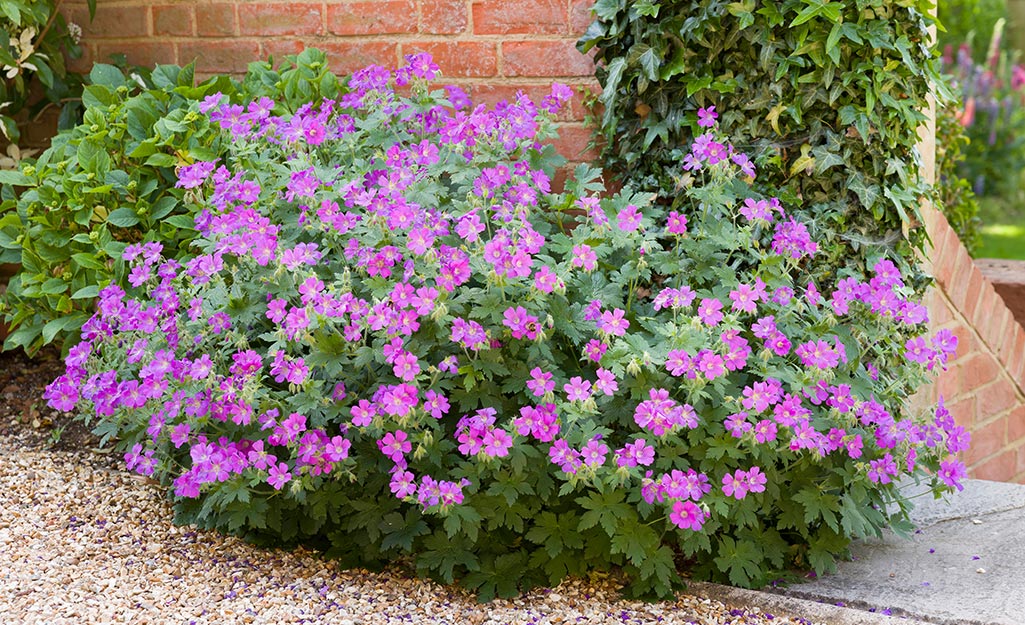
You won’t need to worry about pests ruining your geraniums. Rabbits and deer don’t like the taste or smell. If you notice slugs in wet weather, pick them off separately. If in a container, move your plant to a different location. Geraniums, however, can develop fungus, usually in cooler wet weather. They are also susceptible to root rot if overwatered.
Overwintering Geraniums
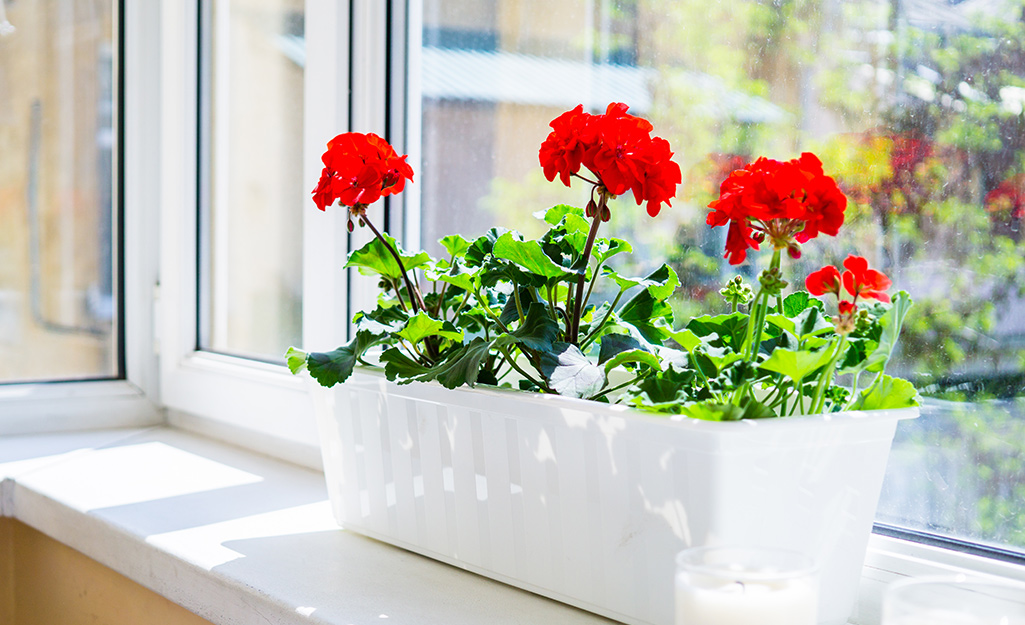
Most geraniums are grown as annuals, but if you want to try and keep them alive through the winter, try overwintering them indoors. One method is to root a new cutting at the end of August or early September. You can also cut back the top half of the plant to 6 inches. Place the plant in a sunny window with southern exposure and reduce watering and fertilizer until spring. If you have geraniums in pots, simply deadhead the flowers and lanky stems and bring inside.
If you want a colorful but easy plant for your yard or hanging baskets, geraniums are a smart choice. The Home Depot has a variety of geraniums in several colors, both to replant, and some already planted in containers. You can also shop The Home Depot Mobile App to find pretty containers to plant your geraniums in.





